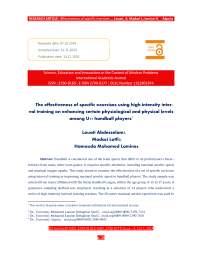The effectiveness of specific exercises using high-intensity interval training on enhancing certain physiological and physical levels among U17 handball players
Автор: Louati Abdesselam, Madaci Lotfi, Hamouda Mohamed Lamine
Журнал: Science, Education and Innovations in the Context of Modern Problems @imcra
Статья в выпуске: 4 vol.7, 2024 года.
Бесплатный доступ
Handball is considered one of the team sports that differ in its performance charac-teristics from many other team games. It requires specific attributes, including maximal aerobic speed and maximal oxygen uptake. This study aimed to examine the effectiveness of a set of specific exercises using interval training in improving maximal aerobic speed in handball players. The study sample was selected from teams affiliated with the Batna Handball League, within the age group of 15 to 17 years. A purposive sampling method was employed, resulting in a selection of 14 players who underwent a series of high-intensity interval training sessions. The 20-meter maximal aerobic speed test was used to evaluate performance before and after a series of high-intensity interval training sessions. The results indicated a statistically significant improvement in maximal aerobic speed. These findings suggest that high-intensity interval training is an effective method for improving maximal aerobic speed and maxi-mal oxygen uptake (VO2max) in handball players.
High-Intensity Interval Training (HIIT) , Maximal Aerobic Speed, Maximal Oxygen Uptake (VO2max), Handball , Age Group U15-U17
Короткий адрес: https://sciup.org/16010296
IDR: 16010296 | DOI: 10.56334/sei/7.4.3
Текст статьи The effectiveness of specific exercises using high-intensity interval training on enhancing certain physiological and physical levels among U17 handball players
Handball is a team sport characterized by diverse performance demands compared to other team games. Its dynamic nature requires variations of speeds and a continuous sequence of motor performances, both with and without the ball. This is due to the nature of matches, where tactical situations constantly shift between offensive and defensive actions, with no identical performance conditions due to the opponent's movements and positioning. Therefore, handball demands specific physiological attributes, including maximal aerobic speed (MAS), defined as the highest speed a player can sustain using aerobic metabolism (Burchett, 2013), and maximal oxygen uptake (VO2max), defined as the maximum amount of oxygen the body can uptake and utilize during maximal exertion (Bassett, 2000). Players lacking these attributes will demonstrably underperform in various offensive and defensive duties. Conversely, well-conditioned players possessing these characteristics exhibit a greater capacity to execute diverse tactical roles effectively. Consequently, enhancing these physiological indicators through structured training contributes to improved endurance and delayed fatigue (Buchheit, 2013). Researchers and practitioners have consistently sought to analyze and improve the demands of this sport by developing scientific methodologies aligned with its specific characteristics. Laurent (2007) noted that football players repeatedly perform efforts of varying rhythm and intensity, prompting researchers to investigate the "Effect of High-Intensity Interval Training (HIIT) Sessions on Enhancing Selected Physiological Indicators." Interval training is defined as a training method involving short periods of intense physical activity interspersed with periods of rest or low-intensity activity. The objective of this type of training is to enhance overall physical fitness, promote fat burning, and improve cardiorespiratory performance in a shorter timeframe.
Several previous studies have been consulted to gather data and information related to the study topic, such as the study by Mohamed Alibrahim (2024), which found that high-intensity interval training has an effect on physical and biological indicators in athletes in individual sports; the study by Cocks (2016), which concluded that high-intensity training contributes to improving and increasing the efficiency of oxygen use in cyclists; as well as the study by Snyder (2016), which found that runners
SEI Journal (P-ISSN: 2790-0169 E-ISSN: 2790-0177) Issue - 4, Vol.7, 2024

trained with high-intensity interval training showed a significant improvement in maximal aerobic capacity; and the study by Ross (2015), which shows that interval training improves physiological indicators by improving the heart's ability to pump blood and oxygen consumption in muscles during exercise; and the study by Gibala and Gillen (2014), which found that high-intensity training leads to many improvements in maximal oxygen consumption, where the results showed that the study sample that worked with high-intensity training showed a significant improvement compared to the study sample that underwent traditional endurance training in aerobic capacity.
Research Problem:
Do specific exercises using high-intensity interval training have an effect on improving maximal aerobic speed in handball players?
Hypotheses
General Hypothesis:
Specific exercises used in high-intensity interval training have an effect on enhancing certain physiological and physical levels among handball players.
Sub-Hypotheses:
-
- There are statistically significant differences between the pre-test and post-test scores in maximal aerobic speed among U17 handball players, in favor of the post-tests.
-
- There are statistically significant differences between the pre-test and post-test scores in maximal oxygen uptake (VO2max) among U17 handball players, in favor of the post-tests.
Objective of the Study:
This study aimed to design high-intensity interval training (HIIT) sessions to enhance selected physiological indicators in Handball players. Additionally, it sought to determine the effect of these sessions on enhancing maximal aerobic capacity and maximal oxygen uptake (VO2max) in Handball players.
Significance of the Study:
The significance of this research lies in its theoretical and practical contributions. Theoretically, it serves as a scientific reference in the field of handball training, providing scientific content related to a fundamental training method. Furthermore, it offers theoretical information on physiological indicators that can be utilized to optimize training processes. Practically, the study provides a set of training sessions that can be used to develop athletes' training status. It also includes the practical procedures of the training program and field tests for evaluating athletes' training status.
Methodological Procedures:
6-1 Study Design:
SEI Journal (P-ISSN: 2790-0169 E-ISSN: 2790-0177) Issue - 4, Vol.7, 2024

The researchers employed an experimental design. 6-2 Sampling techniques:
The study sample was selected from teams affiliated with the Batna Handball League, within the age group of 15-17 years. A purposive sampling method was used, with the total number of selected participants being 20 players.
6-3 Research procedures
-
- Pre-tests: Pre-test measurements were conducted for the study group in the sports hall in
Setif, Algeria, using the maximal aerobic speed test.
-
- Post-tests: Post-test measurements were conducted after completing the training sessions,
i.e., after 12 weeks, using the maximal aerobic speed test.
6-4 Study Instruments
Maximal Aerobic Speed Test (Beep Test): The beep test is a progressive running test conducted over a 20-meter distance. It consists of 21 levels, controlled by a software program containing audio cues (beeps).
-
- Objective: To assess the efficiency of the cardiovascular and respiratory systems
-
- Materials and Procedures: Software program, cones, whistle, stopwatch
-
- Test Protocol: The participant stands between two lines (A and B) separated by 20 meters.
Upon hearing the starting signal (beep), the participant runs between the two lines at progressively increasing speeds, starting at 8.0 km/h. The speed increases incrementally by 0.5 km/h at each level, with each level lasting one minute. The test ends when the participant is unable to maintain the re- quired pace dictated by the beeps.
Training Sessions:
The researchers implemented a training program consisting of four training sessions per week.
The program was implemented for 12 weeks, totaling 48 training sessions.
6-5 Statistical Analyses:
To answer the research questions, appropriate statistical analyses were conducted after entering the data into a computer system. Data were analyzed using the SPSS software package. The following statistical measures were calculated:
Mean and standard deviation.
Pearson's correlation coefficient.
Shapiro-Wilk test for normality.
Wilcoxon signed-rank test
Results Presentation and Analysis
Journal (P-ISSN: 2790-0169 E-ISSN: 2790-0177)
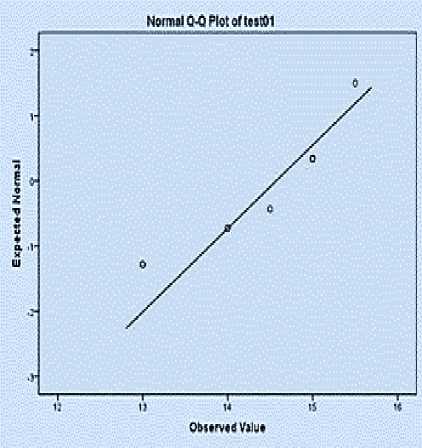
Nwmsl 0-0 Plot oHestO!
о к is
0M»W« таи»
Presentation and Analysis of the First Hypothesis
Table 1 shows the results of the normality test for the pre-test of the study group.
Table 2 shows the results of the normality test for the post-test data
|
Post-test |
|||
|
Significance level |
p-value |
Shapiro-Wilk statistic |
Physiological indicators of football players |
|
0.05 |
0.002 |
0,738 |
Maximal Aerobic Speed |
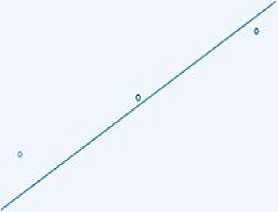
И« НЛ «Я 153 и» ObWvHWtW
Analysis of the Normality Test Result:
|
Pre-test |
|||
|
Significance level |
p-value |
Shapiro- Wilk sta tistic |
Physiological indicators of football players |
|
0.05 |
0.72 |
0.74 |
Maximal Aerobic Speed |
From Table 1 and Table 2, it is clear that the Shapiro-Wilk test statistic for the pre-test data of maximal aerobic speed for the study group is 0.74, while the p-value is 0.002, which is less than the significance level (0.05). Therefore, the data do not follow a normal distribution. Also, the Shapiro-Wilk test statistic for the post-test data of maximal aerobic speed for the study group is 0.738, while the p-value is 0.002, which is less than the significance level (0.05). Therefore, the data do not follow a normal distribution.
Since the data do not follow a normal distribution, the appropriate statistical test for analysis is the non-parametric Wilcoxon signed-rank test.
Table 3 shows the statistical analysis of the pre-test and post-test results for the study group regarding maximal aerobic speed.
|
Study group |
||||||||
|
Significance type |
p-value |
Z-value |
Median Difference |
Post-test |
Pre-test |
Statistical measures |
||
|
Standard Deviation |
Mean |
Standard Deviation |
Mean |
Maximal Aerobic Speed |
||||
|
Significant |
0,005 |
2.54 |
0.5 |
0.32 |
14,75 |
0.78 |
14,25 |
sample |
Figure 3: Presents the statistical analysis of the pre-test and post-test results
Maximal Aerobic Speed
Pre-t est m ean
Post-test mean
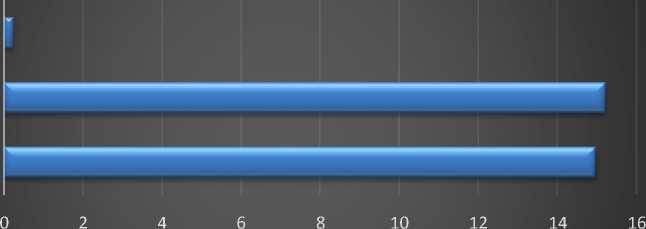
Maximal Aerobic Speed
Table 3. Which presents the statistical analysis of the pre-test and post-test results for maximal aerobic speed (MAS) of the study group, reveals differences between the pre-test mean and the post-test mean of MAS? The pre-test mean for MAS in the study group was 14,25, with a standard deviation of 0.78. The post-test mean was 14,75, with a standard deviation of 0.32. The p-value reached 2.54, which is greater than the significance level of 0.05. Therefore, it is statistically significant.
There are statistically significant differences between the pre-test and post-test in maximal aerobic speed among handball players under 17 years old.
Presentation and Analysis of the Second Hypothesis:
"There are statistically significant differences between the pre-test and post-test in the level of maximal oxygen consumption (VO2 max) among handball players under 17 years old."
Table (04) shows the results of the normality test for the pre-test in the level of maximal oxygen consumption (VO2 max):
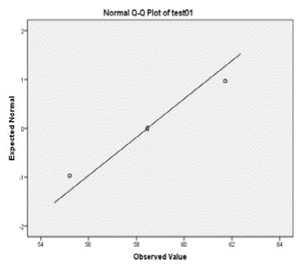
Conclusion: Since the data does not follow a normal distribution, the appropriate test for statistical processing is the Wilcoxon non-parametric test
Table (05): Shows the results of the normality test for the post-test in the level of maximal oxygen consumption (VO2 max)
|
Significance level |
p-value |
Shapiro-Wilk statis tic |
Physiological indicators of football players |
|
0.05 |
0.37 |
0.84 |
maximal oxygen con sumption (VO2 max) |
Analysis of Normality Test Results
From Tables 04 and 05, it is evident that the Shapiro-Wilk test value for the pre-test data of maximal oxygen consumption for the research group is 0.79, with a significance value of 0.11, which is less than the significance level of 0.05. Therefore, the data do not follow a normal distribution. The Shapiro-Wilk test value for the post-
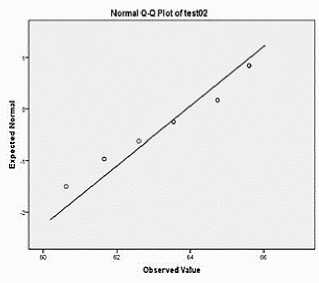
test data of maximal oxygen consumption for the research group is 0.84, with a significance value of 0.37, which is greater than the significance level of 0.05. Hence, the data do not follow a normal distribution.
Conclusion: Since the data do not follow a normal distribution, the appropriate test for statistical analysis is the non-parametric Wilcoxon test.
|
Significance level |
p-value |
difference |
Post-test |
Pre-test |
Statistical measures |
||
|
Standard deviation |
Mean |
Standard deviation |
Mean |
V2MAX |
|||
|
0,002 |
3.54 |
6,45 |
1.43 |
59,77 |
2.77 |
53,32 |
Sample |
Table 06: illustrates the statistical analysis of the pre-test and post-test results for the research group regarding the maximal oxygen consumption level
VO2MAX

Figure 06: Illustrates the statistical analysis of the pre-test and post-test results for the research group regarding the maximal oxygen consumption level.
Analysis:
It is evident from the results of Table 06, which represents the statistical analysis of the pretest and post-test in maximal oxygen consumption for the research group, that there are differences between the mean of the pre-test measurements and the mean of the post-test measurements in maximal oxygen consumption. The mean for the pre-test in maximal oxygen consumption for the study group was 53,32, with a standard deviation of 2.77. In contrast, the post-test mean was 64.14, with a standard deviation of 1.43, resulting in a difference of 6,45 between the two means. The p-value was 0.002, which is less than the significance level of 0.05, indicating that it is statistically significant.
High-intensity interval training has an effect on improving maximal oxygen consumption levels among handball players under 17 years old.
Discussion and Interpretation of Results:
The results from Table 03, which indicate statistically significant differences between the pretest and post-test in maximal aerobic speed among handball players under 17 years old, can be attributed to the high-intensity interval training sessions. This is consistent with the findings of Laursen and Buchheit (2014), who noted that high-intensity training effectively improves maximal aerobic
SEI Journal (P-ISSN: 2790-0169 E-ISSN: 2790-0177) Issue - 4, Vol.7, 2024

speed (VMA). Additionally, Gillen (2016) highlighted that high-intensity training increases endurance capacity and enhances maximal aerobic speed (VMA), while Snyder (2016) stated that high-intensity interval training improves the efficiency of oxygen utilization during prolonged exercise. Furthermore, Cocks (2016) found that high-intensity training enhances VMA in oxygen utilization during maximal exercise. Thus, we can confirm the hypothesis: "There are statistically significant differences between the pre-test and post-test in maximal aerobic speed among handball players under 19 years old, favoring the post-test results."
The results from Table 06, which show statistically significant differences between the pre-test and post-test in maximal oxygen consumption among handball players under 17 years old, can also be attributed to the high-intensity interval training sessions. This aligns with Astorino's findings (2016), indicating that high-intensity training significantly enhances maximal oxygen consumption. Tjonna (2016) also reported substantial improvements in maximal oxygen consumption due to high-intensity training, while Buchheit (2013) confirmed that high-intensity training effectively improves maximal oxygen consumption. Therefore, we can affirm the hypothesis: "There are statistically significant differences between the pre-test and post-test in maximal oxygen consumption among handball players under 17 years old, favoring the post-test results."
Conclusion:
Based on the results obtained by the researchers in this study, through the collection of information using the research tools employed (training units, 20-meter test) applied to U17 handball players, the following conclusions were reached:
There are statistically significant differences between the pre-test and post-test in the level of maximum aerobic speed among handtball players under 17 years old, in favor of the post-tests.
In addition, statistically significant differences were found between the pre-test and post-test in the level of maximum oxygen uptake among handball players under 17 years old, in favor of the posttests.
This confirms the general hypothesis that «Specific exercises using high-intensity interval training have a positive effect on enhancing physiological levels among handball players."
In light of these results, we recommend the following:
Coaches should be familiar with the interval training method and work on applying and using it according to sound scientific principles.
Training programs should be standardized to suit each stage of planning and programming.
SEI Journal (P-ISSN: 2790-0169 E-ISSN: 2790-0177) Issue - 4, Vol.7, 2024

Physiological indicators should be relied upon in building and designing various training programs.
Scientific research and studies should be conducted that focus on various aspects of the handball player to reach higher levels of performance.
Studies and research should be conducted on different samples, studying other physiological and physical characteristics using the interval training method.

